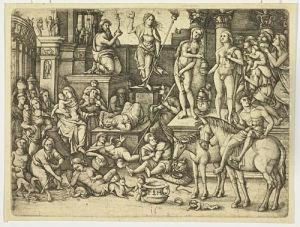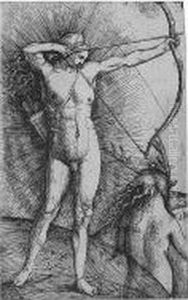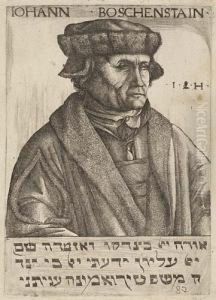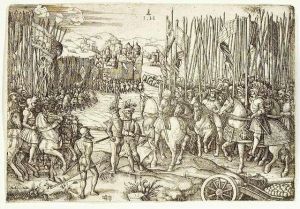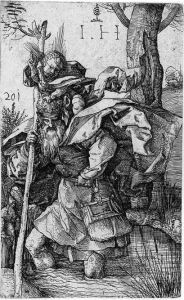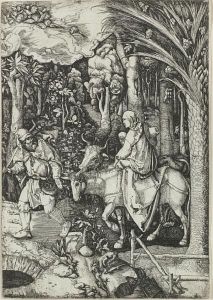Hieronymus Hopfer Paintings
Hieronymus Hopfer was a German printmaker and engraver, part of the Hopfer family of artists, which also included his father, Daniel Hopfer, and his brothers Lambert and Georg Hopfer. The exact date of Hieronymus's birth is not known, but he was active in the early 16th century, primarily in Augsburg, a city renowned for its thriving arts and crafts scene during the Renaissance period.
Hieronymus Hopfer is known for his etchings, a technique that his family, especially his father, Daniel, was instrumental in pioneering and popularizing in Germany. The Hopfers were among the first, if not the first, to apply the etching process to iron plates, a significant innovation in printmaking. This method allowed for more freedom and spontaneity in design compared to the traditional engraving techniques of the time.
Though Hieronymus's work is often overshadowed by that of his father, he developed his own distinctive style. His oeuvre includes portraits, religious subjects, and ornamental designs. Many of his prints demonstrate a keen interest in detail and texture, characteristics that were enhanced by the etching technique. Hieronymus's work reflects the transition from the late Gothic to the Renaissance style, embodying the changing artistic tastes of his era.
Despite his contributions to the art of etching and the influence of the Hopfer family in the realm of printmaking, much about Hieronymus Hopfer's life remains a mystery. Records of his life and work are sparse, and his death is estimated to have occurred around 1550. The legacy of Hieronymus Hopfer and the Hopfer family's innovations in printmaking, however, continue to be recognized by art historians and collectors. Their work not only represents an important chapter in the history of art but also reflects the technological and stylistic advancements of the Renaissance period in Germany.


